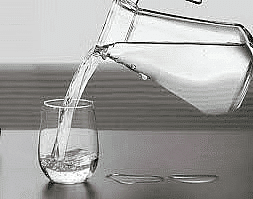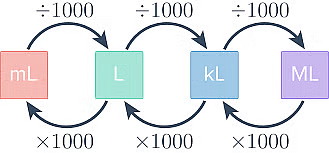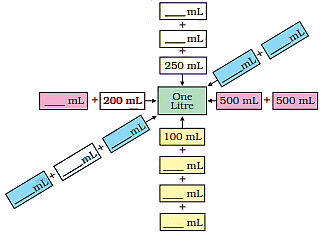Jugs And Mugs Chapter Notes | Mathematics for Class 4: NCERT PDF Download
| Table of contents |

|
| Introduction |

|
| Exploring Volume Measurement and Conversion |

|
| Different Ways of Measuring Volume |

|
| Making 1 L |

|
Introduction
Measurement is all about figuring out how big or small something is. We use measurement to find out the length, width, height, weight, or capacity of different objects . For example, if you want to know how tall you are, you can use a measuring tape to measure yourself from your feet to the top of your head. This tells you your height in centimeters or inches.

Exploring Volume Measurement and Conversion
Teacher: Good morning, class! Today, we're going to explore volume measurement and learn how to convert between different units. Are you ready?Students: Yes, teacher!
Teacher: Great! Let's start by understanding what volume is. Volume is the amount of space that an object or substance takes up. Imagine filling a balloon with air or a bucket with water – that's volume!

Teacher: Now, let's look at some common containers we use to measure volume, like cups, jugs, and bottles. Each container has its own capacity, which means it can hold a certain amount of liquid.

Teacher: Let's say we have a cup that can hold 250 milliliters (ml) of water. If we pour water up to the top, it means we have 250 ml of water in the cup.
Teacher: Now, let's talk about converting between different units of volume. We can measure volume in milliliters (ml) and liters (L). There are 1000 milliliters in one liter. So, if we have 1 liter of water, that's the same as having 1000 milliliters.
Teacher: Let's say we have a bottle that can hold 2 liters of water. How many milliliters is that?
Student: 2000 milliliters!
Teacher: Exactly! We can convert liters to milliliters by multiplying the number of liters by 1000. So, 2 liters is equal to 2000 milliliters.
Different Ways of Measuring Volume
We measure volume in different units depending on how big or small the object is. For example, when we talk about small amounts of liquid medicine in an injection, we use milliliters (ml) to measure the volume. Milliliters are tiny units, perfect for measuring small amounts accurately.
On the other hand, when we talk about larger amounts of liquid, like water in a bucket, we use liters (L) to measure the volume. Liters are bigger units compared to milliliters, so they're suitable for measuring larger quantities like the water you use to fill a bucket.
So, whether it's a small amount of medicine in an injection or a large amount of water in a bucket, we use different units to measure their volumes, making it easier for us to understand and work with different amounts of liquids.

Q: Neetu in Hospital Neetu has to take 3 injections in a day for 5 days. How much medicine will she need for one day?
Ans: 1 injection contains 5 mL of medication.
Neetu will be required to receive three shots per day for the next five days.
As a result, the total amount of medicine in three injections is
As a result, Neetu will require 15 mL of medicine in one day.
15 mL is the amount of medicine Neetu requires in one day.
Neetu's pharmaceutical requirements in 5 days
As a result, Neetu will require 75 mL of medicine in 5 days.
Making 1 L
Just Remember the fact 1L =1000 ml.
There can be different quantities that can be added to form 00 ml or 1 L, Let's see some Examples.
- 500 ml + 500 ml = 1000 ml (1 liter)
- 300 ml + 700 ml = 1000 ml (1 liter)
- 200 ml + 300 ml + 500 ml = 1000 ml (1 liter)
- 250 ml + 750 ml = 1000 ml (1 liter)
- 100 ml + 300 ml + 600 ml = 1000 ml (1 liter)
- 150 ml + 450 ml + 400 ml + 100 ml = 1000 ml (1 liter)
- 50 ml + 200 ml + 100 ml + 150 ml + 500 ml = 1000 ml (1 liter)
- 600 ml + 400 ml = 1000 ml (1 liter)
- 800 ml + 100 ml + 100 ml = 1000 ml (1 liter)
- 350 ml + 50 ml + 300 ml + 300 ml = 1000 ml (1 liter)
 Now As you have understood the concept of volume measurement let's try this example:
Now As you have understood the concept of volume measurement let's try this example:
Ex : If I have 400ml of water, how much do i need now to make it 1L ?
Ans : As We know 1L =1000 ml , so volume needed would be 1000ml-400ml = 600 ml
|
26 videos|195 docs|34 tests
|
FAQs on Jugs And Mugs Chapter Notes - Mathematics for Class 4: NCERT
| 1. How do you measure volume in different ways? |  |
| 2. What are some common units of volume measurement? |  |
| 3. How can you convert volume measurements from one unit to another? |  |
| 4. How can you accurately measure volume using a graduated cylinder? |  |
| 5. What is the importance of understanding volume measurement in everyday life? |  |




















